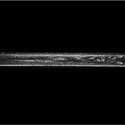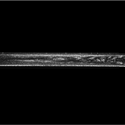Is turbulence here to stay—or not?
When liquid flows through a pipe, both laminar and turbulent flow can coexist. An underlying conceptual question is whether turbulence is generally of a transient nature, or if it can be sustained beyond some critical point? This is not a trivial question since turbulent states can appear stable for incredibly long times before they suddenly collapse.
The majority of recent studies support the view that, beyond a critical Reynolds number, turbulent flow turns into a sustained (attractive) state. By measuring the lifetime of turbulent states in a pipe over eight orders of magnitude in time, Björn Hof, Alberto de Lozar, Dirk Jan Kuik, and Jerry Westerweel at the Max Planck Institute in Göttingen, Germany, and at the Delft University of Technology, The Netherlands, provide convincing evidence that no such critical point exists. Rather, according to their measurements, all turbulent states in a pipe are transient and, to answer the question, not here to stay. – Deniz van Heijnsbergen





